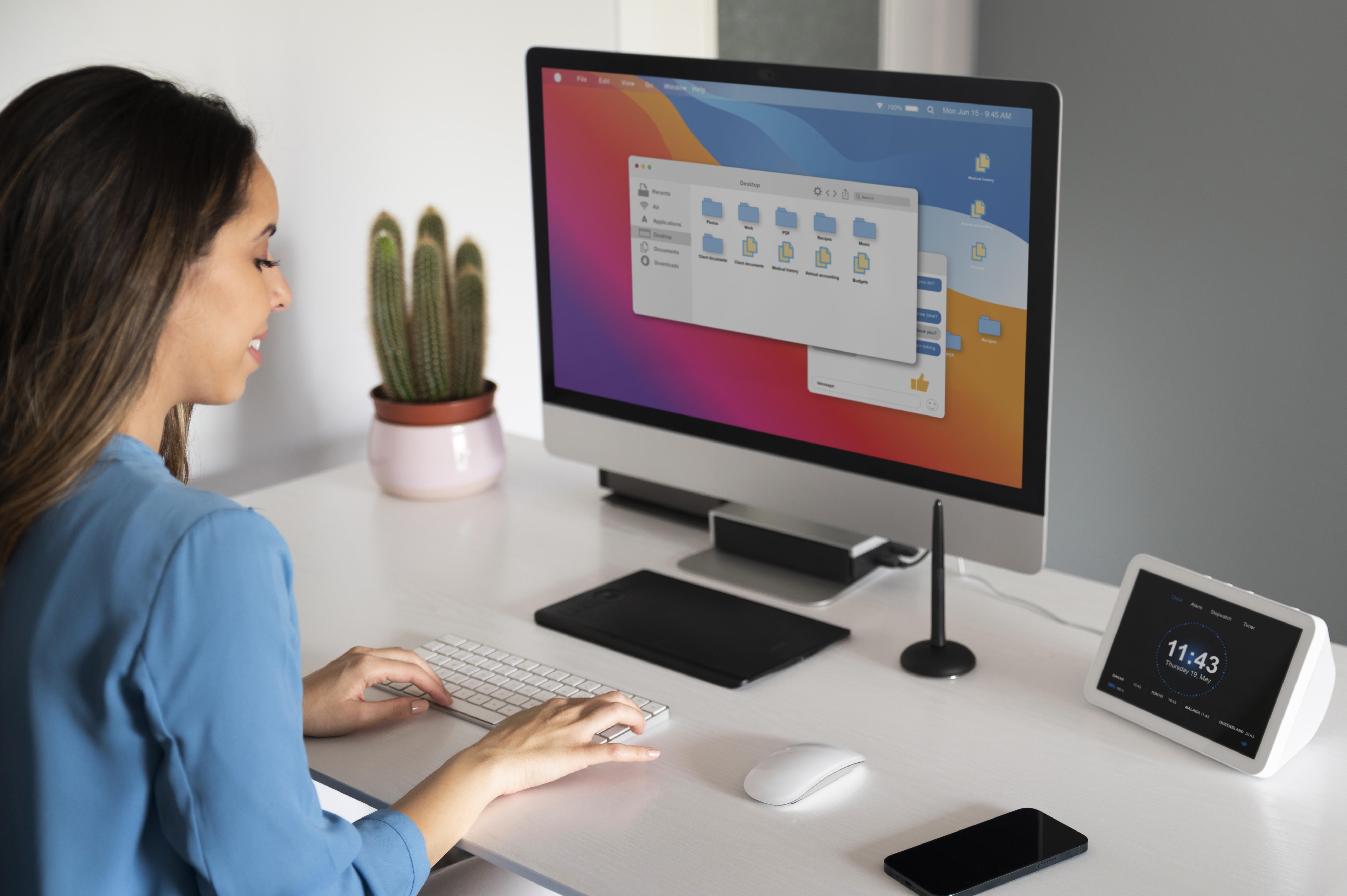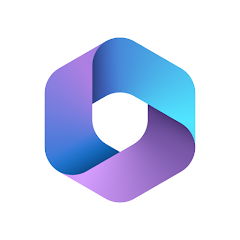AnyDesk Remote Desktop
About this app
Looking for a fast and secure remote desktop solution? Look no further than AnyDesk.
In this article, we will explore what AnyDesk is, how it works, its system requirements, and its key features. We will also discuss the pros and cons of using AnyDesk, as well as how to use it effectively.
Addressing the important question of whether AnyDesk is safe to use, covering its encryption, privacy policy, and user reviews. Let's dive in and discover the world of AnyDesk!
What Is AnyDesk?
AnyDesk is a remote desktop application that allows users to connect to and control a computer from another location. It provides a secure and efficient way to access files, programs, and resources remotely.
With AnyDesk, users can remotely troubleshoot technical issues, collaborate on projects, or access files from their office computer while working from home. Its user-friendly interface makes it easy to navigate, and its compatibility across various platforms, including Windows, macOS, Linux, and mobile devices, ensures seamless connectivity.
AnyDesk boasts advanced security features like encryption and two-factor authentication, prioritizing data protection and confidentiality during remote sessions. AnyDesk stands out for its simplicity, speed, and reliability in facilitating remote desktop connections.
How Does AnyDesk Work?
AnyDesk works by establishing a remote connection between two devices, allowing one device to control the other. Through secure remote access, users can view, transfer files, and collaborate seamlessly.
This is made possible through AnyDesk's efficient technology that ensures fast connection speeds, enabling real-time interaction between devices. Users can easily manage multiple sessions, switching between them effortlessly to handle various tasks concurrently.
AnyDesk prioritizes security by utilizing advanced encryption protocols, safeguarding the data transmitted between devices. This level of encryption ensures that sensitive information remains protected during remote access sessions, giving users peace of mind while effectively interacting with remote devices.
What Are The System Requirements For AnyDesk?
To use AnyDesk, your system needs to meet certain requirements. These include compatibility with various operating systems, adequate network settings for seamless connection, and sufficient bandwidth to ensure optimal performance.
Having the right system requirements is crucial for a smooth AnyDesk experience. Different platforms, such as Windows, macOS, Linux, Android, and iOS, have specific technical specifications that need to be met.
Understanding the network configurations is essential, as firewalls and routers may need to be configured to allow for remote desktop connections. Having a stable internet connection with ample bandwidth is fundamental to prevent lags and interruptions during remote sessions.
By ensuring your system meets these requirements, you can enjoy a reliable and efficient remote desktop experience with AnyDesk.
What Are The Features Of AnyDesk?
AnyDesk offers a range of features that enhance remote access and collaboration. From secure connections to efficient file transfer and real-time collaboration tools, AnyDesk is designed to optimize productivity and ensure data privacy.
The emphasis on security is a key highlight of AnyDesk, as it utilizes cutting-edge encryption protocols to safeguard data during remote sessions. AnyDesk's collaboration capabilities enable multiple users to work together seamlessly on projects, facilitating efficient teamwork irrespective of physical locations. The file management tools integrated into AnyDesk streamline the process of transferring files between devices, enhancing overall workflow efficiency. These comprehensive features combine to create a seamless remote desktop experience that effectively addresses the diverse needs of users seeking reliable and secure remote access solutions.
Fast and Secure Remote Access
AnyDesk provides fast and secure remote access through advanced encryption protocols, ensuring that data transmission between devices is protected. Users can rely on AnyDesk for secure and efficient remote connections.
With AnyDesk's emphasis on data security, it utilizes robust encryption standards such as TLS 1.2 technology, ensuring that all communications are encrypted end-to-end. This feature is crucial in safeguarding sensitive information from unauthorized access or interception during remote sessions.
By implementing stringent encryption measures, AnyDesk creates a secure environment for users to transfer files, collaborate on projects, or troubleshoot technical issues without compromising data integrity. The utilization of industry-leading encryption standards sets AnyDesk apart as a trusted solution for remote access needs.
Cross-Platform Compatibility
AnyDesk offers cross-platform compatibility, allowing users to connect and control devices across different operating systems seamlessly. This multi-platform support enhances flexibility and accessibility for remote desktop users.
By supporting a wide range of operating systems such as Windows, macOS, Linux, Android, and iOS, AnyDesk ensures that users can easily connect with their colleagues or access their files from any device they prefer. This feature is particularly beneficial for individuals who work in multi-device environments or for businesses that utilize various devices within their work processes.
With the ability to seamlessly switch between operating systems without any compatibility issues, users can experience a smooth and efficient remote desktop connection regardless of the device they are using.
Customizable User Interface
AnyDesk provides a customizable user interface that allows users to tailor their remote desktop experience to suit their preferences. With a range of customization options, users can optimize their workflow and enhance productivity.
By being able to adjust settings such as display resolution, remote keyboard shortcuts, background images, and interface color themes, users can create a personalized work environment that mirrors their individual needs and preferences. This level of customization not only fosters a more engaging and enjoyable remote desktop experience but also boosts efficiency by enabling users to set up their workspace in a way that best suits their workflow.
The ability to customize the user interface on AnyDesk plays a vital role in enhancing user experience and usability, making remote desktop interactions more intuitive and user-friendly.
File Transfer and Management
AnyDesk facilitates seamless file transfer and management between connected devices, ensuring secure data transmission. Users can transfer files quickly and securely while maintaining data integrity and confidentiality.
The platform utilizes advanced encryption protocols like TLS 1.2 and RSA key exchange to safeguard data during transfer processes. AnyDesk also offers end-to-end encryption, ensuring that sensitive information remains protected from interception or unauthorized access. The software includes features like access controls and session logging to monitor and control file transfers, enhancing overall security measures. With these robust security protocols in place, users can have peace of mind knowing that their data is safe when using AnyDesk for file management and transfer.
Online Collaboration Tools
AnyDesk offers online collaboration tools that enable real-time interaction and teamwork among remote users. With features for screen sharing, session recording, and remote troubleshooting, AnyDesk facilitates seamless collaboration.
These tools provided by AnyDesk empower team members to share their screens, allowing them to showcase their work, provide guidance, or receive instant feedback.
The session recording feature ensures that important discussions and decisions are captured for future reference, promoting transparency and accountability within the team.
Real-time collaboration capabilities enable simultaneous editing of documents, brainstorming sessions, and effective communication, fostering a sense of unity and cohesion among remote workers.
What Are The Pros And Cons Of AnyDesk?
When considering AnyDesk, users can expect fast and reliable performance, high security standards, and affordable pricing plans as notable advantages. Limitations in features for the free version, remote printing options, and customer support may pose challenges.
The speed and responsiveness of AnyDesk's remote access solution make it a favored tool for quick and efficient work sessions. The built-in encryption ensures that data transfers remain secure, giving users peace of mind. The affordable pricing tiers cater to various user needs, making it accessible to both individuals and businesses. On the flip side, the free version lacks certain advanced features that may be essential for some users, and the customer support response time can be inconsistent, leaving some users frustrated.
Pros:
Among the advantages of using AnyDesk are its scalability, responsiveness, and ability to establish a seamless connection between devices. These features contribute to a smooth and efficient remote desktop experience.
The scalability of AnyDesk allows users to easily adapt to changing business needs and varying workloads without compromising performance. Its responsiveness ensures quick and lag-free interactions, fostering real-time collaboration. The seamless connection capabilities streamline the process of remotely accessing and controlling devices, promoting swift data transfer and enhanced productivity. These aspects collectively enable users to work seamlessly across multiple platforms and devices, making AnyDesk a versatile and reliable tool for effective remote access and collaboration.
Fast and Reliable Performance
One of the key pros of AnyDesk is its fast and reliable performance, characterized by low latency and optimal bandwidth efficiency. Users can expect smooth and real-time interactions during remote access sessions.
This exceptional performance is a result of AnyDesk's intelligent codec that minimizes latency, ensuring that actions on the remote desktop are mirrored instantly with virtually no delays. Its efficient use of bandwidth means that even in low-bandwidth environments, users can enjoy a fluid and uninterrupted connection. By maintaining a high level of performance, AnyDesk facilitates a seamless remote desktop experience, allowing users to work efficiently and collaboratively from any location.
High Security Standards
AnyDesk maintains high security standards to protect user data privacy through robust encryption mechanisms. Users can trust AnyDesk for secure remote access and data transfer, ensuring confidentiality and integrity.
These security measures not only validate AnyDesk's commitment to safeguarding sensitive information but also provide peace of mind to users who rely on its services.
By employing end-to-end encryption, AnyDesk ensures that data remains protected from unauthorized access during remote sessions. This proactive approach to security helps in preventing potential breaches and cyber threats, establishing a strong foundation of trust between AnyDesk and its users.
The emphasis on data privacy and secure connections highlights AnyDesk's dedication to delivering a secure and reliable platform for remote access needs.
Affordable Pricing Plans
AnyDesk offers affordable pricing plans with flexible subscription options and licensing choices. Users can select a plan that suits their needs and budget, ensuring cost-effective remote desktop solutions.
The pricing plans provided by AnyDesk cater to a wide range of users, from individual freelancers to large enterprises. Users can choose from monthly or annual subscription options, allowing them to pay based on their usage requirements. AnyDesk offers different licensing models such as free, Lite, Professional, and Power, ensuring that users have the flexibility to scale up or down based on their business needs. This cost-effectiveness and flexibility in pricing reflect AnyDesk's commitment to providing accessible and efficient remote desktop solutions for all users.
Cons:
Among the disadvantages of AnyDesk are limitations in the free version's features, lack of remote printing options, and challenges related to limited customer support. These aspects may impact the overall user experience negatively.
The free version of AnyDesk offers only basic features, which can be frustrating for users requiring more advanced functionalities. The absence of remote printing options may hinder productivity for individuals who often need to print documents from their remote device.
Limited customer support can leave users feeling stranded when faced with technical issues or questions, leading to delays in problem resolution and potentially impacting work efficiency. These drawbacks collectively contribute to a less seamless and satisfying user experience with the application.
Limited Features for Free Version
One of the cons of AnyDesk is the limited features available in the free version, which may restrict users' access to advanced functionalities. Challenges related to customer support and connection speed could impact user satisfaction.
For instance, in the free version of AnyDesk, users are often restricted in terms of file transfer capabilities, which can be frustrating when trying to send large files quickly. The free version lacks essential tools like whiteboarding and session recording, which are crucial for collaboration and productivity. Limited access to customer support may lead to delays in resolving technical issues, causing inconvenience to users. The restricted connection speed in the free version can also result in laggy remote sessions and decreased overall performance, affecting the efficiency of remote work or support tasks.
No Remote Printing Option
Another drawback of AnyDesk is the lack of a remote printing option, which may inconvenience users who rely on remote printing capabilities. Issues related to access management and session limits could also pose challenges for users.
The absence of remote printing functionality in AnyDesk can be particularly frustrating for individuals who need to print documents from a remote location without physically accessing the printer. This limitation can hinder productivity and workflow efficiency, especially for professionals who frequently work from different locations.
Concerns regarding access management and session limits may restrict users from seamlessly and conveniently managing their remote desktop connections. Users may encounter challenges in effectively controlling who has access to their systems and may face interruptions due to session limitations, impacting their overall user experience.
Limited Customer Support
Limited customer support is a potential downside of AnyDesk, affecting user assistance and troubleshooting services. Issues related to help desk availability and user authentication processes may hinder optimal user experience.
Given the lack of a dedicated customer service hotline, AnyDesk users may face challenges in obtaining real-time assistance for technical issues, leading to potential delays in problem resolution. The absence of round-the-clock help desk support can further exacerbate the frustration of users encountering urgent issues.
Stringent user authentication procedures can sometimes pose obstacles for users, resulting in potential difficulties in verifying identities and accessing account information. Robust customer support is essential in ensuring user satisfaction and efficiently addressing technical concerns, underscoring the significance of timely and effective assistance in maintaining a positive user experience.
How To Use AnyDesk?
To use AnyDesk effectively, users need to download and install the application, establish a secure connection to a remote computer, and utilize additional features such as session recording and collaboration tools.
- Ensure that both the host and client devices are connected to stable and high-speed internet connections to avoid lags or disruptions during the remote session.
- Once the application is installed, launch AnyDesk and note down your unique AnyDesk address. Share this address with the remote user or input the remote user's address to establish a secure connection.
- Take advantage of AnyDesk's session recording feature to create detailed records of remote sessions for future reference and audit purposes.
- Proper session management, including ending sessions securely and managing permissions, is crucial for maintaining security and privacy in remote desktop interactions.
Download and Install AnyDesk
The first step to using AnyDesk is to download and install the application on your device. Ensure that you follow the installation instructions carefully to set up AnyDesk correctly for remote access and endpoint management.
- Once the installation is complete, you can explore AnyDesk's powerful endpoint management features.
- With AnyDesk, you can easily control and monitor multiple endpoints from a centralized dashboard, allowing you to efficiently manage your devices from anywhere.
The platform also offers file transfer capabilities, enabling seamless sharing between connected devices. AnyDesk's advanced security protocols ensure that your remote connections are secure and protected against unauthorized access.
- By leveraging these endpoint management features, you can enhance productivity and streamline your remote desktop operations.
Connect to a Remote Computer
After installing AnyDesk, users can connect to a remote computer by entering the partner's ID and verifying the connection.
It is crucial to emphasize the importance of ID verification as it acts as the primary security measure when establishing connections with remote computers. By validating the partner's ID, users ensure a secure and trusted link, making it significantly harder for unauthorized parties to gain access to sensitive information.
Once the connection is established, users can leverage the remote control functionalities provided by AnyDesk to seamlessly navigate the remote desktop, transfer files, troubleshoot issues, and collaborate efficiently with colleagues or clients located in different physical locations.
Use Additional Features and Tools
Explore additional features and tools offered by AnyDesk, such as collaboration tools, remote support functions, and file transfer capabilities. These tools enhance user productivity and enable seamless interaction during remote sessions.
- Among the valuable tools within AnyDesk are its whiteboard feature, which allows users to draw and annotate directly on the remote screen, facilitating real-time explanations and brainstorming.
- The chat function enables instant messaging between parties, aiding in communication and clarification during collaborative efforts.
- The session recording tool is beneficial for reviewing past interactions or training purposes, ensuring that important information is not lost.
These tools collectively contribute to a more efficient and effective remote desktop experience, fostering greater collaboration and task execution.
Is AnyDesk Safe To Use?
AnyDesk prioritizes user safety by implementing encryption and security measures to protect data privacy during remote access. The application's privacy policy and user reviews also contribute to assessing its safety and reliability.
The encryption protocols used by AnyDesk are designed to ensure that all data transmitted between devices is secure and inaccessible to unauthorized parties. This end-to-end encryption provides users with peace of mind knowing that their information is protected. AnyDesk's stringent privacy policies outline how user data is handled and stored, further enhancing trust. Positive user feedback highlighting the application's performance and security features adds another layer of confidence in using AnyDesk for remote desktop access.
Encryption and Security Measures
AnyDesk ensures a secure connection through robust encryption and security measures, safeguarding data integrity and confidentiality. Users can trust AnyDesk for secure remote access, data backup options, and data transfer security.
The encryption methods used by AnyDesk are based on cutting-edge technology, implementing end-to-end encryption to prevent unauthorized access to data during remote sessions. AnyDesk offers multi-factor authentication and session verification protocols to further enhance security.
In today's digital age, data backup and portability are crucial aspects of maintaining data security and accessibility. AnyDesk provides users with seamless data backup solutions, ensuring that important files are securely stored and readily available when needed. This combination of encryption, security features, data backup, and portability options makes AnyDesk a reliable choice for organizations and individuals needing secure remote desktop solutions.
Privacy Policy
AnyDesk's privacy policy emphasizes data privacy, access management, and bandwidth efficiency to protect user information and ensure secure remote access. Users can review the privacy policy to understand how their data is handled and secured.
The company implements strict protocols to safeguard user data, including encryption measures and regular security audits. Access control mechanisms are in place to ensure that only authorized individuals can connect to remote devices, enhancing security. AnyDesk's commitment to bandwidth optimization not only enhances performance but also minimizes potential vulnerabilities. By prioritizing privacy and security, AnyDesk aims to build trust with users and adhere to data protection regulations, promoting transparency and accountability in handling sensitive information.
User Reviews and Ratings
User reviews and ratings provide valuable insights into the user experience with AnyDesk, offering feedback on usability, performance, and features. Educators can also share experiences related to remote teaching and endpoint management with AnyDesk.
By analyzing these user-generated reviews, one can gather information on the ease of setting up AnyDesk, its speed, and overall satisfaction. This feedback loop not only helps users make informed decisions but also allows the AnyDesk team to continuously improve the application based on real-world experiences.
In the educational sector, teachers and professors leverage AnyDesk to conduct virtual classrooms, manage students' devices remotely, and provide technical support efficiently. The platform's ability to facilitate seamless screen sharing, file transfer, and collaborative work makes it a versatile tool for educational institutions of all sizes.
Related Apps
-
OnTheClockGETBusiness
-
Spark DriverGETBusiness
-
Uber Eats OrdersGETBusiness
-
Workplace Chat from MetaGETBusiness
-
Microsoft Power BIGETBusiness


















